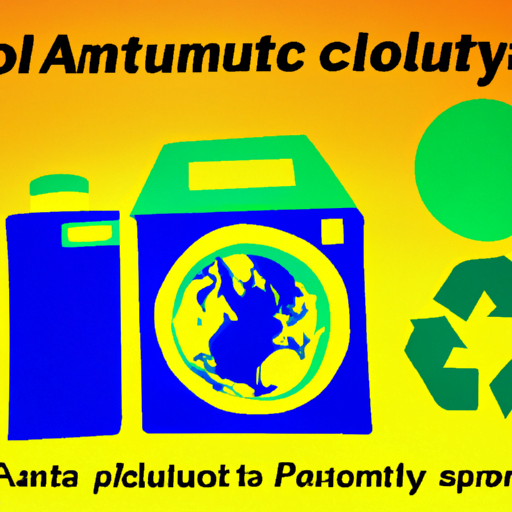
-
Table of Contents
Designing for Environmental Causes: Sustainability Graphics

Design plays a crucial role in shaping our world, and in recent years, there has been a growing emphasis on using design to promote sustainability and environmental causes. Sustainability graphics, in particular, have emerged as a powerful tool for raising awareness, educating the public, and inspiring action towards a more sustainable future. In this article, we will explore the importance of designing for environmental causes and delve into the various ways in which sustainability graphics can make a positive impact.
The Power of Design in Environmental Communication
Design has the ability to communicate complex ideas and evoke emotions in a way that words alone cannot. When it comes to environmental causes, effective design can help bridge the gap between scientific data and public understanding. By visually representing environmental issues, design can make them more accessible and relatable to a wider audience.
One of the key challenges in environmental communication is the overwhelming nature of the problems we face. Climate change, deforestation, pollution – these issues can seem insurmountable and distant to many people. However, through thoughtful design, these problems can be broken down into digestible pieces, making them easier to comprehend and engage with.
The Role of Sustainability Graphics
Sustainability graphics encompass a wide range of design elements, including infographics, illustrations, posters, and digital media. They are specifically created to convey information about environmental issues, sustainable practices, and the importance of conservation. By combining visual elements with concise and compelling messaging, sustainability graphics have the power to captivate audiences and drive positive change.
1. Raising Awareness
Sustainability graphics are instrumental in raising awareness about environmental issues. They can highlight the urgency of the problems we face and inspire individuals to take action. For example, a poster depicting the impact of plastic pollution in our oceans can evoke a strong emotional response and motivate people to reduce their plastic consumption.
Case Study: The Plastic Ocean
In 2017, the documentary film “A Plastic Ocean” was released, shedding light on the devastating effects of plastic pollution on marine life. To complement the film’s message, a series of sustainability graphics were created to raise awareness about the issue. These graphics featured powerful images of marine animals entangled in plastic waste, accompanied by statistics on the scale of the problem. The visuals were widely shared on social media platforms, reaching millions of people and sparking conversations about plastic pollution.
2. Educating the Public
Sustainability graphics are an effective tool for educating the public about environmental issues and sustainable practices. They can simplify complex concepts and present information in a visually engaging manner. By providing clear and concise information, sustainability graphics empower individuals to make informed decisions and adopt more sustainable behaviors.
Case Study: The Carbon Footprint
The concept of a carbon footprint can be difficult to grasp for many people. To address this, sustainability graphics have been used to visually represent the carbon emissions associated with various activities. For example, an infographic might compare the carbon footprint of driving a car versus taking public transportation. By presenting the information in a visually compelling way, individuals can easily understand the environmental impact of their choices and make more sustainable decisions.
3. Inspiring Action
Sustainability graphics have the power to inspire action and motivate individuals to make positive changes in their lives. By showcasing the potential benefits of sustainable practices, these graphics can create a sense of hope and empowerment. They can demonstrate that small actions, when multiplied, can have a significant impact on the environment.
Case Study: The Power of Renewable Energy
Sustainability graphics have been instrumental in promoting the use of renewable energy sources, such as solar and wind power. By visually representing the benefits of renewable energy, such as reduced carbon emissions and energy independence, these graphics have inspired individuals and communities to transition to cleaner energy sources. For example, a poster showcasing the growth of solar energy installations worldwide can motivate individuals to consider installing solar panels on their own homes.
Best Practices for Designing Sustainability Graphics
When designing sustainability graphics, it is important to keep certain best practices in mind to ensure their effectiveness:
- Keep it simple: Use clear and concise messaging to convey your message effectively.
- Use visuals strategically: Choose images and illustrations that evoke emotions and capture attention.
- Consider the target audience: Tailor your design to resonate with the specific demographic you are trying to reach.
- Highlight solutions: Showcase sustainable practices and solutions to inspire action.
- Make it shareable: Design graphics that are easily shareable on social media platforms to maximize their reach.
Conclusion
Sustainability graphics have emerged as a powerful tool for designing for environmental causes. By raising awareness, educating the public, and inspiring action, these graphics have the potential to drive positive change and contribute to a more sustainable future. As designers, we have a responsibility to use our skills to create impactful visuals that communicate the urgency of environmental issues and empower individuals to make a difference. By harnessing the power of design, we can create a more sustainable world for future generations.
